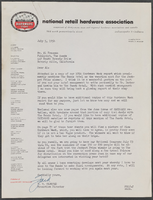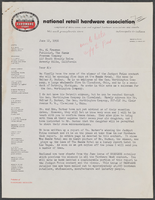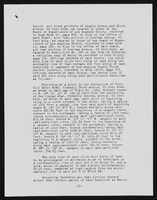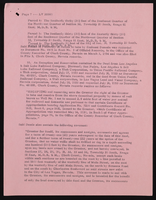Search the Special Collections and Archives Portal
Search Results
Marclem Hernandez oral history interview
Identifier
Abstract
Oral history with Marclem Hernandez conducted by Cecilia Winchell, Stefani Evans, and Claytee D. White on June 30, 2022 for the Reflections: the Las Vegas Asian American and Pacific Islander Oral History Project. In this interview, Hernandez begins the interview by describing the lengthy immigration process throughout his childhood that separated him from his mother for five years, as they lived in both the Manila, Philippines and Las Vegas, Nevada. After switching schools several times while living in Las Vegas, Hernandez graduated from Southwest Career and Technical Academy before attending the University of Nevada, Las Vegas (UNLV) for a degree in criminal justice. After graduating UNLV, Hernandez describes attending Georgia Southern University for a master's degree in higher education. He discusses his experience living in southern Georgia, embracing certain parts of the culture, and what switching to virtual education was like during the COVID-19 pandemic. After finishing his degree online in Las Vegas, Hernandez became President Keith Whitfield's assistant at UNLV. He discusses the close relationship he has developed with the president, including how they shaped his own aspirations.
Archival Collection
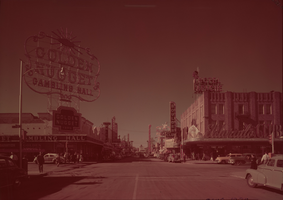
Film transparency of Fremont Street seen from Second Street, Las Vegas, Nevada, circa 1947
Date
Archival Collection
Description
Looking northwest towards the Union Pacific Railroad station from the intersection of Fremont and Second Streets, Las Vegas, Nevada. The Golden Nugget is on the southwest corner and the Eldorado Club is on the northwest corner. Signs for the Boulder Club, Pioneer Club, Las Vegas Club, Frontier Club and White Spot Cafe are also visible.
Site Name: Fremont Street
Address: Fremont Street, Las Vegas, NV
Image
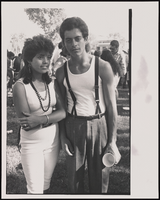
Lupe Nunez and Saul Arebas at a Mexican Independence Day celebration at Lion's Park: photographic print
Date
Archival Collection
Description
In every Chicano barrio throughout the Southwest, a subculture exists among some Hispanic adolescents and young adults which includes a unique way of speaking, dressing and acting. A fierce loyalty to the neighborhood and the people one grows up with develops during this period as well. Hispanic youth who live in a particular barrio (neighborhood) call each other "Homeboy," Saul Arebas, a local "homeboy" and his lady friends, Lupe Nunez, both pictures of "Urban Chicano Cool" are shown here at the Mexican Independence Day celebration at Lion's Park.
Image

Transcript of interview with Michael Tell by Barbara Tabach, January 6, 2018
Date
Archival Collection
Description
Michael Tell, the youngest son of Jack and Beatrice Tell, is the publisher of the Las Vegas Israelite newspaper and the second generation of ownership. He briefly traces his Jewish ancestral roots back to Eastern European grandparents who settled in New Jersey and New York. He became a bar mitzvah in a conservative Jewish synagogue in New York City. At age sixteen, he accompanied his father, Jack Tell, westward to Nevada. The elder Tell was in pursuit of owning a newspaper and Mike was a perfect companion as Jack took over ownership of the Territorial Enterprise. Mike recalls it was a short lived venture and the family settled in Las Vegas, where his father went to work for Hank Greenspun at the Las Vegas Sun and then for Henderson Home News, owned by Morry Zenoff. In 1965, Jack Tell opened the Las Vegas Israelite. Meanwhile, Mike explored the lucrative business of concert promotions and opened a teen nightclub 1961 called the Twin Lakes Twist. He hired such talents of the era as Bobby Darin and Wayne Newton. Soon his business acumen grew and he moved Mike Tell Productions to Los Angeles. He tells the story of his last concert, booking Al Green, and being held at gunpoint. Then in 1979, he returned to work at the Israelite, which had a circulation of about 2000. The Jewish community was beginning to show signs of growth. He recalls running an ad in 1992 for High Holy Days services to be held at the Aladdin hotel. He used the word “Lubavitvh” in the ad and this sparked an interest in Las Vegas from the Chabad movement. He also recalls anti-Semitic episodes in Las Vegas, such as Ralph Englestad’s Hitler birthday parties and the presence of Skinheads. And he reflects on the changes in the community that he has observed over the decades.
Text

